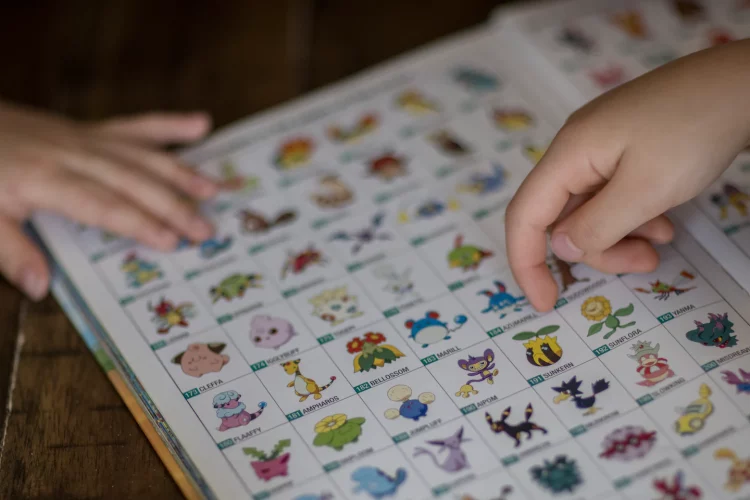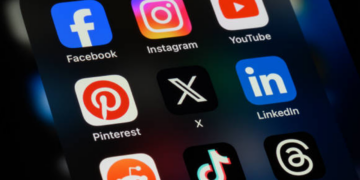They’re passing the torchic to their kids
August 10, 2022 at 1:30 p.m. EDT

Mike Bridges films his 8-month old son, Finn, crawling toward stuffed plushies of the three original starter Pokémon — Bulbasaur, Charmander and Squirtle.
At first, as Finn scoots across the carpet — flailing his feet and slapping his hands — he inches in the direction of a winking Bulbasaur. Then he glances toward a smiling Squirtle. Finally, Finn reaches out for Charmander, the fiery baby dragon.
“Good choice lad!” one of the video’s 2.2 million viewers replied on TikTok.
“It’s not the one I would have picked,” Bridges said later in an interview with The Post. (He would’ve chosen Bulbasaur). “But we will love and support him no matter what.”
Parents often record life’s firsts. A baby’s first steps, a child’s first bike ride, a teenager’s first dance. But recently, some couples have started to treasure something new: their kid’s first Pokémon. It’s a recreation of a rite of passage from the franchise, in which players need to choose one of three starter Pokémon before beginning their journey.
The 26-year-old Pokémon franchise is one of the highest grossing media franchises in the world, right next to Hello Kitty and Mickey Mouse. And the kids who grew up catching Pokémon are now parents.
“We’ll be able to talk at length about what his favorite Pokémon is,” Bridges said of Finn. “We’re one of the first generations where that is very possible, and probably a little more normal, for video games or media to be shared between adults and children.”
The Pokémon Company International, which is responsible for managing the Pokémon brand outside of Asia, fully recognizes the fan base for the franchise now spans generations, even from grandparents to grandkids. Torrie Dorrell, the vice president of marketing for the company, said she loves watching parents “passing the baton” on to their children — and she added that the company is “really just getting started” on how it plans to serve all these audiences.
“We just are continuing to diversify our offerings,” Dorrell said, without providing specifics. “We can’t share too much about our future, obviously, and what we’re looking at doing but we definitely see it. It’s not lost on us.”
Randy and Stephanie Timmerman recorded their daughter picking her starter Pokémon and posted the video on TikTok in March — not to go viral but just to have a record of the moment. “Because it’s adorable,” Stephanie said.
To Randy, a pastor who lives on the eastern shore in Virginia, parents have always wanted to show their kids the hobbies they’re passionate about. For him, it’s Pokémon. For his dad, it’s a love for fishing.
“I love fishing to this day, especially when it comes to being side-by-side with my dad,” Randy said. “Whether or not our daughter ends up being a Pokémon nerd like me, or us, doesn’t matter. What matters is that this is the way that we’re seeking to connect with her.”
When Pokémon first came to North America in the late 90s, the franchise was an omnipresent form of kid’s entertainment — a television show, trading cards and a video game all at once. Brandon Stell, a 32-year-old mechanic who lives in Hinesville, Georgia, remembers seeing the first movie in theaters, collecting the cards with his friends and going to Burger King to get all the plastic toy monsters.
For Stell, the video games have been a consistent part of his life. It all began when his dad found an original gray Game Boy with a version of the first Pokémon game while cleaning out a car at work one day. Stell said his family didn’t have a lot of money growing up and his dad was an alcoholic who was “in and out of the picture.” The game became an escape.
“My brother and I would just go to the bedroom, pull out the Game Boy and just, kind of, hide playing Pokémon together,” Stell said. “It still is a form of escapism for me.”
Years later, in high school, Stell would ride his bike to his girlfriend Kimberly’s house just so the two could play “Pokémon Sapphire,” a sequel on the Game Boy Advance. And she’d often beat him with a “level 100 Dodrio,” a three-headed ostrich that knows a one-hit move called “Tri Attack.”
“This was high school, mind you, so we were thinking about other things,” Stell said. “But all we did when we got there is she pulled out her Game Boy and I pulled out my Game Boy.”
The two are now married with five kids. Stell remembers when they first started talking about building a family together. Eventually, he thought then, he’d be able to introduce his kids to the world of Pokémon. And he did. Once or twice a week, Stell plays the trading card game with his 9-year-old daughter, Venasera.
“As corny as it sounds, it was one of the things I was really looking forward to about having kids,” Stell said. “Being able to share not just Pokémon, but all of my interests.”
Natasha Vadori-Canini, a mother of two who lives near Toronto, is re-watching the original animated series with her four-year-old son, Jonathan. Vadori-Canini told The Post the show beats what’s on today, like Peppa Pig or Caillou. When she was a kid, Vadori-Canini remembers running home from school so she could catch the latest episode. She didn’t have tapes or DVR back then, so either she caught the episode live or missed it, she said.
The animated series drew the furor of fans and critics alike when it first released. In 1997, hundreds of children were hospitalized in Japan after reportedly experiencing seizures and other symptoms while watching a scene from the show. It’s estimated that 55 percent of the primary and middle school children in Tokyo were watching the show that night.
But it wasn’t just one strange night of television. The franchise has a long history of spurring moral panics. Educators banned the playing card game from school grounds after a reported spate of robberies, fights and one stabbing in Quebec over the cards. Assuaging the concerns of Catholic parents, the Vatican said the Pokémon franchise’s first movie, which was released in 1999, does not have “any harmful moral side effects” on children.
Almost two decades later, “Pokémon Go,” the mobile game that uses augmented reality to place monsters in real-world locations, became an international sensation. It’s been six years since the title released and “Pokémon Go” is still one of the most popular mobile games to download. At the height of the coronavirus pandemic fans clamored for the trading cards again; players camped in lines outside of retail stores to purchase packs. Target eventually suspended sales of the cards, citing safety concerns.
As a kid growing up outside of Seattle, Douglas Haines rarely played with Pokémon cards. He remembers his pastor brought a small barbecue to Sunday school for kids to burn their trading cards. The way the church saw it: “Pokémon evolved, and evolution was bad,” Haines said. The collectible cards fit into the same banned bucket as Harry Potter and Dungeons & Dragons. As a replacement for the Pokémon cards, the church offered biblical trading cards depicting scenes like Daniel in the lion’s den, Haines said.
“I can’t imagine how many thousands of dollars in rare Charizard holographics were burned that day in the nineties,” said Haines, 35. “I cry thinking about it now.”
Two decades later, Haines is the father of four kids and a film producer in Las Vegas. His six-year-old son Max wakes his dad up “almost every morning” to play with Pokémon cards on the floor of his bedroom. Haines said a booster pack of Pokémon cards and a trip to McDonalds is a “huge deal” for Max, and it’s easy for him to take his son on a whim.
“In adulthood, I’m really liking Pokémon more because I’m able to connect with him on that level,” Haines said. “Five dollars for a Pokémon booster pack is nothing.”
Source by www.washingtonpost.com





























